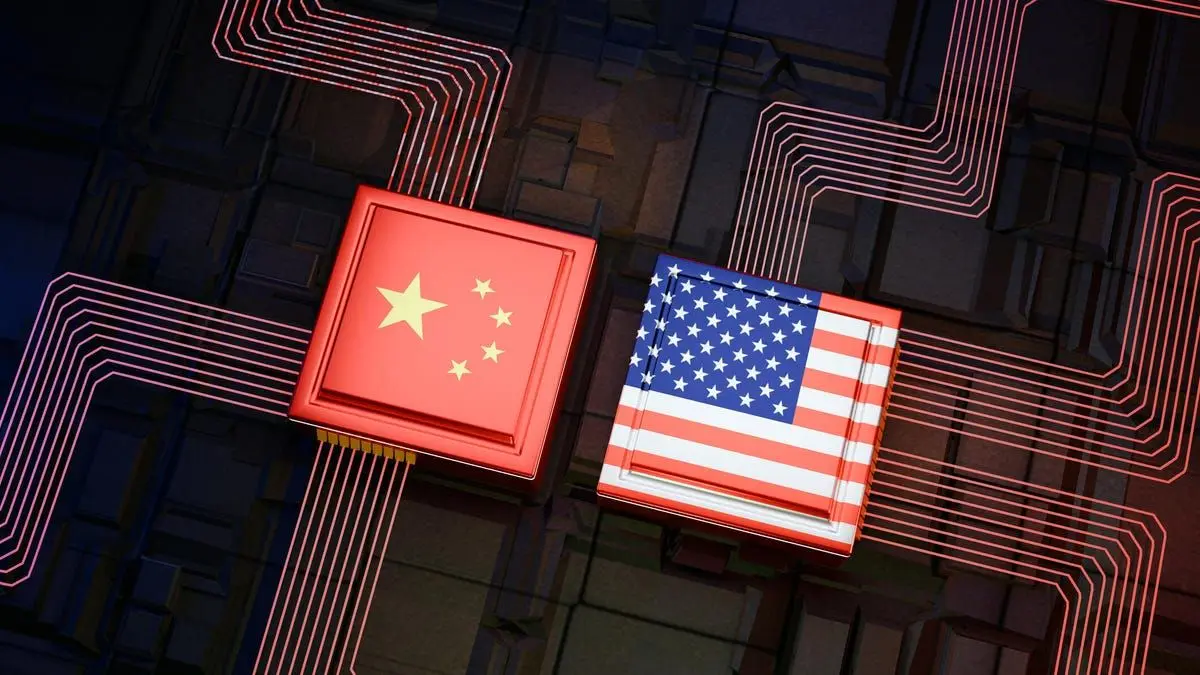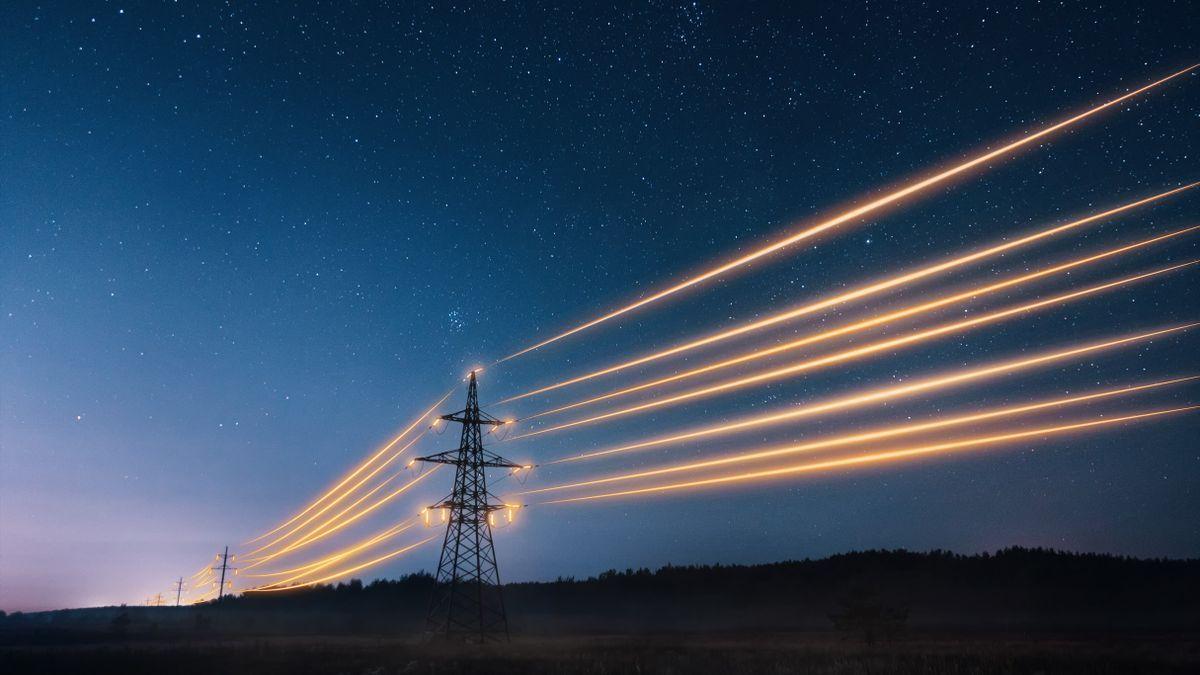AI and Data Centers Strain U.S. Power Grid Amid Surging Energy Demand
3 Sources
3 Sources
[1]
How the surging demand for energy and rise of AI is straining the power grid in the U.S.
The surging demand for energy in the U.S. is growing significantly for the first time in decades. Experts say it is forecast to hit record highs both this year and next year -- creating more planet-warming emissions. Part of the demand is due to an increasing number of data centers across the country, along with the rise of artificial intelligence. The nation's roughly 2,700 data centers are mostly run by big tech firms like Google, Amazon, Microsoft, Meta and Apple, and consumed more than 4% of all electricity in the U.S. in 2022. It's projected to more than double to 9% by 2030, according to the Electric Power Research Institute, a research organization and nonprofit focused on energy. It is not affiliated with any companies or type of technology. But it's already taxing the U.S.' aging power grid, and the demands of AI are just beginning to grow. A ChatGPT query, for example, uses nearly 10 times the electricity of a typical internet search. "It's gonna take innovation to really think about how we are going to scale this faster to keep up with the pace of growth," said Amanda Peterson Corio. As the global head of Google's data center energy, Peterson Corio's job is to find more juice to keep the company's power-hungry machines humming. According to McKinsey & Co., a single data center can use as much power as 80,000 U.S. homes. Peterson Corio said it will be a challenge to make that kind of electricity use sustainable. "As we look to the next decade, those demands continue to grow and the real challenge is trying to figure out how we can do this in a way that meets our climate goals," she said. Google's planet warming emissions rose by 13% last year and have jumped nearly 50% since 2019, the company said. Google has invested heavily in wind and solar and says 64% of the time its operations run on clean energy. When the sun isn't shining and the wind isn't blowing, data centers still rely on fossil fuels that contribute to climate change, leaving big tech scrambling to bring more clean power to the grid. "We can develop large projects that will really move the needle on climate change," said Tim Latimer, the CEO of Fervo Energy, which is partnering with Google to boost geothermal power. Geothermal energy accounts for less than 1% of electricity in the U.S., according to the Department of Energy. Fervo wants to change that. Latimer said the company think geothermal energy can be as much as 20% of the U.S. electricity grid. Google plans to use Fervo's geothermal power to help run its Nevada data centers and eventually others around the world, aiming to eliminate its use of coal and gas by 2030. "We need something that has that reliability that works 24/7 to get us all the way there," Latimer said.
[2]
How the surging demand for energy and rise of AI is straining the power grid in the U.S.
The surging demand for energy in the U.S. is growing significantly for the first time in decades. Experts say it is forecast to hit record highs both this year and next year -- creating more planet-warming emissions. Part of the demand is due to an increasing number of data centers across the country, along with the rise of artificial intelligence. The nation's roughly 2,700 data centers are mostly run by big tech firms like Google, Amazon, Microsoft, Meta and Apple, and consumed more than 4% of all electricity in the U.S. in 2022. It's projected to more than double to 9% by 2030, according to the Electric Power Research Institute, a research organization and nonprofit focused on energy. It is not affiliated with any companies or type of technology. But it's already taxing the U.S.' aging power grid, and the demands of AI are just beginning to grow. A ChatGPT query, for example, uses nearly 10 times the electricity of a typical internet search. "It's gonna take innovation to really think about how we are going to scale this faster to keep up with the pace of growth," said Amanda Peterson Corio. As the global head of Google's data center energy, Peterson Corio's job is to find more juice to keep the company's power-hungry machines humming. According to McKinsey & Co., a single data center can use as much power as 80,000 U.S. homes. Peterson Corio said it will be a challenge to make that kind of electricity use sustainable. "As we look to the next decade, those demands continue to grow and the real challenge is trying to figure out how we can do this in a way that meets our climate goals," she said. Google's planet warming emissions rose by 13% last year and have jumped nearly 50% since 2019, the company said. Google has invested heavily in wind and solar and says 64% of the time its operations run on clean energy. When the sun isn't shining and the wind isn't blowing, data centers still rely on fossil fuels that contribute to climate change, leaving big tech scrambling to bring more clean power to the grid. "We can develop large projects that will really move the needle on climate change," said Tim Latimer, the CEO of Fervo Energy, which is partnering with Google to boost geothermal power. Geothermal energy accounts for less than 1% of electricity in the U.S., according to the Department of Energy. Fervo wants to change that. Latimer said the company think geothermal energy can be as much as 20% of the U.S. electricity grid. Google plans to use Fervo's geothermal power to help run its Nevada data centers and eventually others around the world, aiming to eliminate its use of coal and gas by 2030. "We need something that has that reliability that works 24/7 to get us all the way there," Latimer said.
[3]
How AI and data centers impact climate change
Experts say the surging demand for energy in the U.S. is forecast to hit record-highs both this year and next year, straining the country's aging power grid and creating more planet-warming emissions. Part of the demand is from a growing number of data centers across the nation and the rise of artificial intelligence.
Share
Share
Copy Link
The rapid growth of artificial intelligence and data centers is putting unprecedented pressure on the U.S. power grid. This surge in energy consumption, coupled with increasing electrification and extreme weather events, is challenging the nation's aging electrical infrastructure.

The AI Boom and Its Energy Implications
The artificial intelligence revolution is reshaping various aspects of our lives, but it comes with a significant energy cost. As AI applications proliferate, the demand for computing power is skyrocketing, leading to a surge in energy consumption. Data centers, the backbone of AI operations, are emerging as major energy consumers, putting unprecedented strain on the U.S. power grid
1
.The Growing Energy Appetite of Data Centers
Data centers, which house the servers and infrastructure necessary for AI operations, are becoming increasingly power-hungry. These facilities now consume about 2% of U.S. electricity, a figure that's projected to double by 2030
2
. The energy demands of these centers are so substantial that they're influencing decisions about where to locate new facilities, with proximity to reliable and abundant power sources becoming a crucial factor.Challenges to the Power Grid
The surge in energy demand isn't solely due to AI and data centers. The U.S. is witnessing a broader trend of electrification across various sectors, from transportation to heating. This increased reliance on electricity, combined with the power needs of AI infrastructure, is putting significant pressure on an already aging power grid
1
.Climate Change and Extreme Weather Events
Adding to the complexity of the situation is the impact of climate change. Extreme weather events, such as heatwaves and storms, are becoming more frequent and intense. These events not only increase energy demand for cooling but also pose risks to the power infrastructure itself, potentially leading to outages and disruptions
3
.The Need for Grid Modernization
To address these challenges, experts are calling for significant investments in grid modernization. This includes upgrading transmission lines, improving energy storage capabilities, and implementing smart grid technologies. Such improvements are crucial to ensure the grid can handle the increasing energy demands while maintaining reliability and resilience
2
.Related Stories
Balancing Progress and Sustainability
As AI continues to advance, finding a balance between technological progress and energy sustainability becomes increasingly important. Some tech companies are exploring ways to make their data centers more energy-efficient, including the use of renewable energy sources and advanced cooling systems. However, the rapid pace of AI development means that energy demand is likely to continue outstripping efficiency gains in the near term
3
.The Road Ahead
The convergence of AI's growth, increasing electrification, and climate change presents both challenges and opportunities for the U.S. energy sector. As the nation grapples with these issues, it's clear that significant investments in infrastructure, coupled with innovative approaches to energy management, will be necessary to ensure a reliable and sustainable power supply for the AI-driven future.
References
Summarized by
Navi
Related Stories
Recent Highlights
1
OpenAI launches ChatGPT app store, opening doors for third-party developers to build AI-powered apps
Technology

2
Chinese AI Models Close Gap With US Systems as Open-Source Strategy Reshapes Global Tech Order
Policy and Regulation

3
OpenAI updates ChatGPT with teen safety rules as child exploitation reports surge 80-fold
Technology








